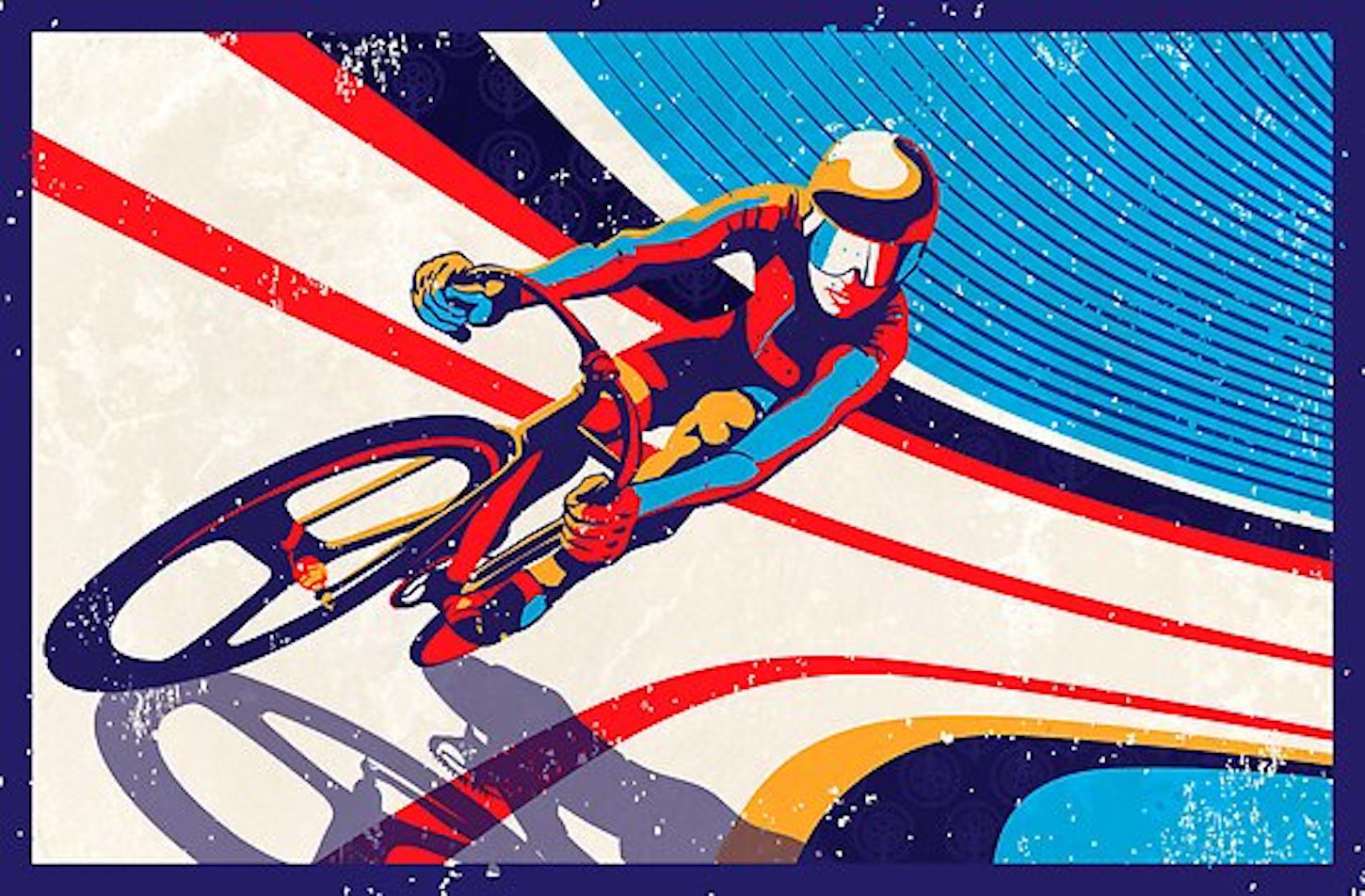

The difference between victory and failing to qualify for a final can boil down to hundredths of a second, showing why track cyclists are meticulous about their preparation, especially when it comes to selecting equipment. Here we’ve pinpointed seven of the gains that are adopted by many of the world’s best, and can also be used by track cyclists of all levels.
1. Geometry and characteristics of the bike
A track bike differs from its road counterpart in that it has a fixed gear and no brakes, meaning riders stop by decreasing cadence. It also features a higher bottom bracket so that the pedals don’t strike the steeply banked tracks. A more acute angle between the seat post and horizontal tube helps power. The sprinters use traditional-looking dropped handlebars whereas time-triallists use aerobars, designed so that the rider can adopt a more streamlined and drag-reducing position. Frame shape is important with a teardrop tube profile shown to be significantly more aerodynamic than a round tube.
Track bike manufacturers are bound by a number of UCI Regulations which ensure that – while technological performance developments continue – the race remains on a ‘level playing field’ with the emphasis on the performance of the human rider, rather than the benefits delivered by the machine itself.
2. Wheel selection
“Great team performance, which led us to a new Belgian record at the Hong Kong World Cup,” said Lotte Kopecky on helping her nation to team pursuit silver. Kopecky also attached images to her social media posts, including one that showed the team in action – all using disc wheels. This is down to the greater aerodynamic advantages offered by discs, which are allowed on both the front and rear in time trial events, even though that does come at a cost both in terms of manoeuvrability and weight. It’s why many riders might instead choose a three-, four- or five-spoke front wheel. They offer a compromise of cutting drag yet remaining lighter and easier to handle.
3. Second skin
A skinsuit is designed to be the most aerodynamic piece of clothing a track cyclist will wear. Top-end skinsuits feature cutting-edge fabrics that reduce drag. Their fabrics are strategically placed and seams carefully considered, often deriving from the rider testing in the wind tunnel. It’s suggested that up to 80% of the drag created by the rider-bike combination is what’s generated by the rider, highlighting just how important a form-fitting skinsuit is.
A rider can save up to 30 watts – or more – if they strike the sweet spot between aerodynamics and comfort.
UCI Regulations ensure that skinsuits can’t change the ‘morphology’ (shape) of the rider, and don’t allow any non-essential clothing or devices other than for protection. Changes to clothing surface can only be made in the assembly of the fabric – by weaving or by threading – and the surface roughness of clothing must not exceed a depth of 1mm.
4. Aero helmets
Aerodynamic helmets have been used for a number of years to smooth out the airflow compared to traditional vented versions that, while perfect for long distances on the road, churn up ‘dirty air’, creating drag. Most track riders, such as New Zealand’s women’s pursuit team who won gold in Cambridge, wear helmets that feature a teardrop tail. This further aids the airflow, as long as the rider’s head is level so that there’s a seamless line from head through to back.
Many use visors for further aerodynamic gains, which can total up to 25 watts.
5 Socks and shoes
Whether it was Lee Hye-jin powering to victory in the women’s keirin at the recent UCI World Cup in New Zealand or the German duo of Roger Kluge and Theo Reinhardt taking gold at the previous round in Hong Kong, drag-reducing socks and overshoes are omnipresent at elite level, and can save several watts.
Riders must keep within UCI Regulations, which, broadly, stipulate they mustn’t rise any more than halfway up the fibula.
6. Chain reaction
Specially treated, or waxed, chains are popular at UCI World Cup level. They came to prominence when Sir Bradley Wiggins used one in 2015 en route to breaking the UCI Hour Record. It was treated by a specially formulated lubricant that could reportedly save up to five watts, and equivalent equipment is now affordable for consumers.
A clean chain is given ultrasonic baths, where sound waves create bubbles that first clean the chain and then apply a wax deep into the links. This reduces friction, makes the drivetrain more efficient and results in more speed!
7. Aero feedback
British track cyclist Dan Bigham trained as an aerodynamicist and is known to be a fan of real-world aerodynamic feedback thanks to the Notio Konect. This device mounts to the underside of a front bicycle computer mount and features a ‘pilot tube’ that protrudes from its body. Among other variables, it measures static pressure and dynamic pressure, – and therefore can estimate drag. It’s predicted that these pitot tubes will become commonplace.
Of course riders continue to look for more – marginal – advantages. They will use aerodynamic gloves, huge chainrings, aero skewers and even aero bar-end plugs to keep one step ahead of the competition. It all contributes to the combination of human rider, machine and manufacturing that makes for fast, exciting racing.



